Iranian Employers Threaten Large Layoffs Over Minimum Wage Increase
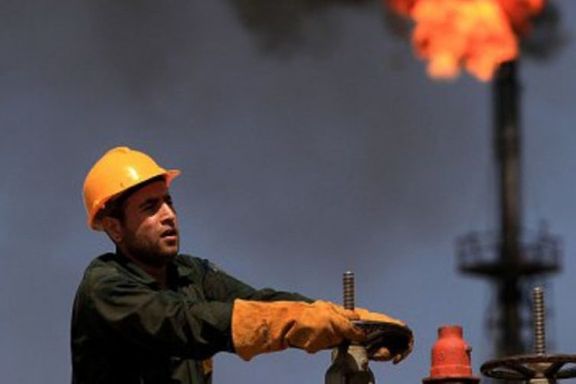
Iranian employers have threatened mass layoffs if the minimum wage is increased beyond their expectation.

Iranian employers have threatened mass layoffs if the minimum wage is increased beyond their expectation.
The decision is expected to be made this week, with contract workers most vulnerable.
A 15-hour session of the Supreme Labor Council, the body responsible for determining the minimum wage, ended without reaching a final agreement Saturday, leaving millions of workers in doubt of their future.
The government has already decided to give its employees both in the administrative bureaucracy and its business enterprises a mere 20-percent raise when annual inflation tops 50 percent.
The government’s administrative bureaucracy, including education but not the armed forces employs around 2.5 million people.
Workers say due to the high cost of living and economic problems, they cannot agree with the government’s current proposals, which barely allow them to survive.
The minimum needed for an average family is around $310 to $390 a month. Even if the government manages to double the current minimum salary of around $100, it will fall way short of the amount needed.
Labor representatives insist that next year’s minimum wage in the non-governmental sector should be on par with the inflation of over 50 percent, but government representatives are of the idea that salaries should increase at about the same rate of public-sector employees.
There are no reliable figures about the unemployment rate in Iran because the government is known to manipulate economic data for political reasons. The labor ministry, for example considers one hour of work per week as employment, but experts believe well over 20 percent are unemployed and many more have unstable employment.
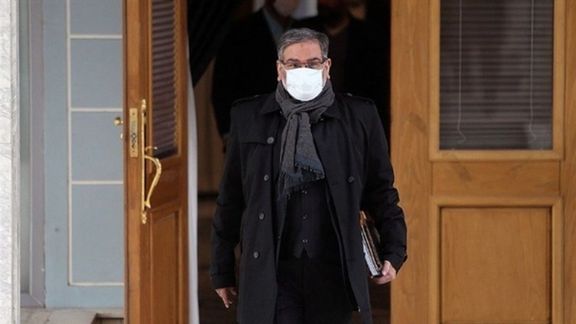
The secretary of Iran's Supreme National Security Council (SNSC) will sign a deal on border security with Iraq.
Ali Shamkhani traveled to Baghdad on Sunday as head of a delegation including the governor of the central bank and the assistant foreign minister for the Persian Gulf countries.
The trip is part of Iran’s renewed zeal to revive ties with regional neighbors and deepen relations with its global allies.
Shamkhani has visited China and the UAE in the last eight days, much needed in the face of a collapsing economy and growing political isolation on the world stage.
According to IRNA, the Iranian state news agency, the Secretary of SNSC will hold negotiations with Masrour Barzani, the Prime Minister of the Kurdistan Region, and Qassim al-Araji, the Iraqi National Security Advisor on the issue of border security.
Shamkhani signed a pact with the Saudis earlier this month to resume bilateral political ties with the mediation of China.
Shamkhani also visited Abu Dhabi and Dubai last week, meeting senior officials of the United Arab Emirates.
Iraq has played an important role in the recent negotiations between Tehran and Riyadh.
Face-to-face negotiations between delegations from Iran and Saudi Arabia, with the mediation of Iraq, began in Baghdad in 2021, and Oman also played a role in the talks.
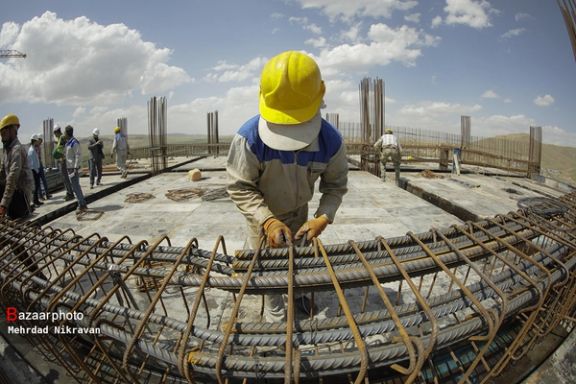
Officials in Iran are busy haggling over minimum wage for the new year beginning Tuesday, as inflation is soaring and the rial losing half of its value in six months.
A 15-hour-long session of the Supreme Labor Council ended on Saturday without reaching a final figure for the next year’s minimum monthly wage. The minimum needed for an average family to simply survive is about $310 to $390 a month, but even if the government manages to double the current minimum salary of around $100, it will fall way short of the amount needed.
The Supreme Labor Council, which consists of representatives of workers, employers, and the government, is the Islamic Republic’s mechanism to determine the salaries of the workers, in the government controlled economy.
The government has already decided to give its employees both in the administrative bureaucracy and its business enterprises a mere 20-percent raise.
Labor representatives insist that next year’s minimum wage in the non-governmental sector should be on par with the inflation of over 50 percent, but government representatives are of the idea that salaries should increase at about the same rate that public-sector employees are set to receive.
Labor groups walked out of the Friday meeting as a sign of protest, but they returned to bargaining at the request of the labor minister.
According to the centrist website Entekhab, pundits believe that the Council will settle on a final figure of about 70,000,000 to 80,000,000 rials (between about $155 to $180 at today’s exchange rates). The government and employers are pushing for these figures, but labor rights activists say that according to the inflation rate and official statistics of the poverty index, next year's wage figure should not be set below 100,000,000 rials (about $220).
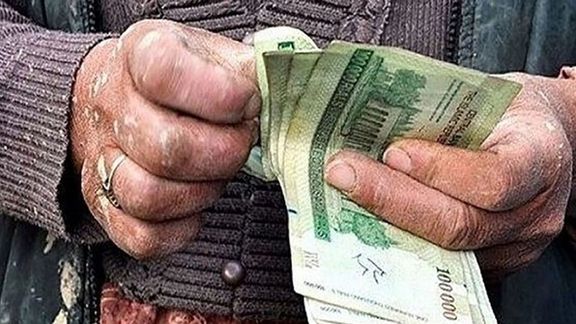
According to the International Labor Organization, the purpose of minimum wages is to protect workers against unduly low pay.
According to Iran’s Minister of Cooperatives, Labour and Social Welfare Sowlat Mortazavi, the final session will be held on Sunday, the last working day of the Iranian year. In addition to Mortazavi, Minister of Economic Affairs and Finance Ehsan Khandozi and Minister of Industry, Mines and Trade Reza Fatemi Amin represented the administration of President Ebrahim Raisi in the session.
When the government submitted the budget bill to the parliament in January, it sought to significantly increase the minimum monthly salary for the next Iranian year (starting March 21) but considering the steep devaluation of the rial in February, this seems out of reach.
The impact of rial’s fall will be highly reflected in the real value of the government’s proposed minimum wage increase of 20 percent for the next year. Since early December, the rial has fallen by around 30 percent. Many commodities already cost at least 30 percent more than the wage increase for government employees which will come into effect on March 21.
Iran has one of the lowest minimum wages in the world, but wages were increasing from 20 years ago to about 10 years ago when the minimum wage hit a record high of about $275 a month in 2010. This coincided with the time when the United Nations Security Council began imposing sanctions to force Tehran to roll back its nuclear program.
In January 2023, minimum wages in the EU member states ranged from $410 per month in Bulgaria to $2,500 per month in Luxembourg.
Iranian workers were earning more than $300 a month before the United States imposed sanctions in 2018, which pushed Iran’s currency almost ninefold lower, creating inflation that wages have not kept up with.
Rising prices and economic hardship have led to repeated labor strikes and nationwide protests since 2017, even before the imposition of US sanctions. Iran’s centrally controlled economy is inefficient and not conducive to foreign investments, with high reliance on oil exports.
The only reprieve can come from a suspension of US oil export and international banking sanctions if Iran would agree to a deal with the United States and its chief European allies. However 18 months of talks hit a dead-end in September and sanctions remained in place.
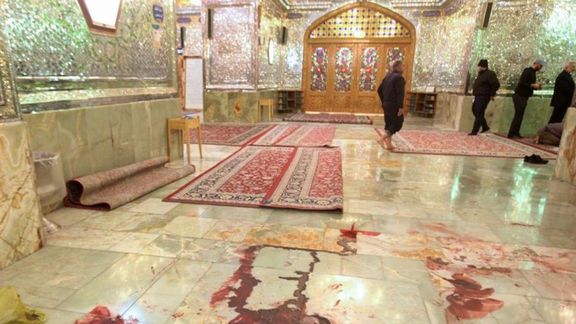
An Iranian court has handed out death sentences to two men over an attack on a Shiite shrine in Iran that killed 15 people in October and was claimed by the militant group Islamic State.
Fars Province judiciary head Kazem Mousavi said the two men had been found guilty of charges including "spreading corruption on earth" and acting against national security, the official news agency IRNA reported, adding that the sentences can be appealed.
CCTV footage broadcast on state TV showed the attacker entering the popular Shah Cheragh shrine in the southern city of Shiraz after hiding an assault rifle in a bag and shooting as worshippers tried to flee and hide in corridors.
The gunman, identified as a citizen of Tajikistan, later died in a hospital from injuries sustained during the attack.
The two men sentenced to death said during the trial that they had been in contact with the Islamic State in neighboring Afghanistan and helped organize the attack, Iranian media reported.
Three other men received jail sentences ranging from five to 25 years in the trial, Mousavi said, adding that several other "Daesh (Islamic State) suspects linked to this case" were awaiting trial.
ISIS took responsibility for the attack on the Shahcheragh in Shiraz on October 26, but some questioned the Islamic Republic’s account saying it was staged by the regime itself to distract attention from nationwide protests.
With reporting by Reuters
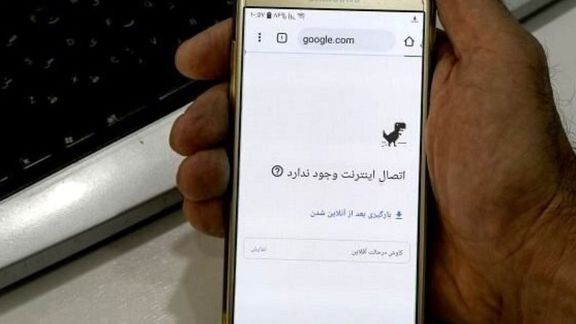
Amid reports that Iranians have lost more than $770 million due to deliberate government internet outages in 2022, authorities try to play down the impact.
Iranian Minister of Information and Communications Technology Issa Zarepour said Friday that there is no accurate data regarding the damage from internet access restrictions. However, independent VPN review website Top10VPN said in its annual that the economic impact was about $773 million in 2022.
While in dollars this might not appear to be a staggering figure, in local currency it is hundreds of trillions of rials and a huge loss for an economy straddled by US sanctions, inefficiency and corruption.
As nationwide anti-regime protests began in September, the government started to disrupt access to the internet to prevent news about the unrest being disseminated both inside the country and abroad. It also aimed at preventing protesters from communicating with each other. Internet disruption lasted for weeks.
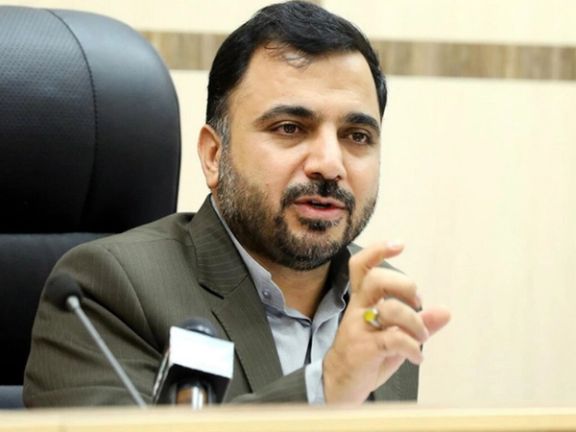
Intermittent disruption have continued in 2023, mostly coinciding with protests. The latest one occurred on March 7, as Iranians were holding a nationwide rally to protest the regime's inaction or possible involvement in the face of poisonous gas attacks on schoolgirls in recent months.
Drawing widespread criticism on social media, Zarepour, however, rejected the estimates by the company – and any other foreign source for that matter – saying that "there have been dozens of assessments by foreign sources that cannot be relied upon." He added that the Islamic Republic itself has not done any evaluation over the losses caused by the Internet restrictions.
Earlier in the month, Statista -- an online platform specialized in market and consumer data – said Iran’s blocking access to social media sites and news outlets was second only to Russia in 2022, affecting almost 72 million people
A report released in January said that due to extensive internet and social network restrictions, 20 percent of people lost their online jobs in the last four months of the previous year. According to Jobvision website, 46 percent of organizations suspended or postponed more than half of their recruitment programs due to the recent internet restrictions, and 45% of companies or businesses that depend on the Internet have decided to reduce their payments or had to pay wages by delay.
The computer trade union of Tehran -- or Tehran ICT Guild Organization -- announced in November that almost half of the Internet service providers in had seen a 50-percent drop in sales due to disruptions, censorship, and Internet shutdowns during the protests. The union's secretary Alireza Keshavarz Jamshidian went on to say that about half of the Internet providers lost over 500 million rials (around $1,400) a day, as sales dropped. However, he added, one-fifth of the companies say they suffered between $2,800 and $14,000 loss a day.
Curfew-style shut down of the internet has a highly damaging impact on several industries including food, medicine, and steel production, especially on small businesses and farmers. The E-Commerce Association in Tehran announced last year that the internet shutdown costs Iran $1.5 million per hour.
Despite all the losses due to the government restrictions, the cash-strapped administration of Ebrahim Raisi has issued a new decree to collect eight percent royalty fee from video call services of mobile operators in the country.

A human rights group says nearly 30,000 people were arrested for staging protests, political activities, or the expression of their opinions in the Iranian year ending on Monday, March 20.
The report by the US-based Human Rights Activists News Agency (HRANA) states that during the 12 months, 29,688 people were arrested in Iran, of which 28,419 were detained for exercising their rights free expression.
328 women's rights activists, 258 trade union activists, 235 ethnic minorities and 169 people of religious minorities were also among the detainees, according to the report.
Iran’s chief judge announced March 13 that 22,000 people arrested during recent protests were "pardoned" and released in the past 6 months but he declined to mention the total number of people arrested.
In the reporting period, the public and Revolutionary Courts across Iran opened 1,075 legal cases against defendants facing political and national security charges, added the report, saying that the courts issued a combined total of 31,164 months in prison and 2,507 months of suspended jail terms.
HRANA also has described the last Iranian year a difficult one for women, reporting that at least 39 women were murder victims of domestic violence while 11 others were beaten, assaulted and injured by the morality police or religious vigilantes imposing so-called proper hijab in the public.